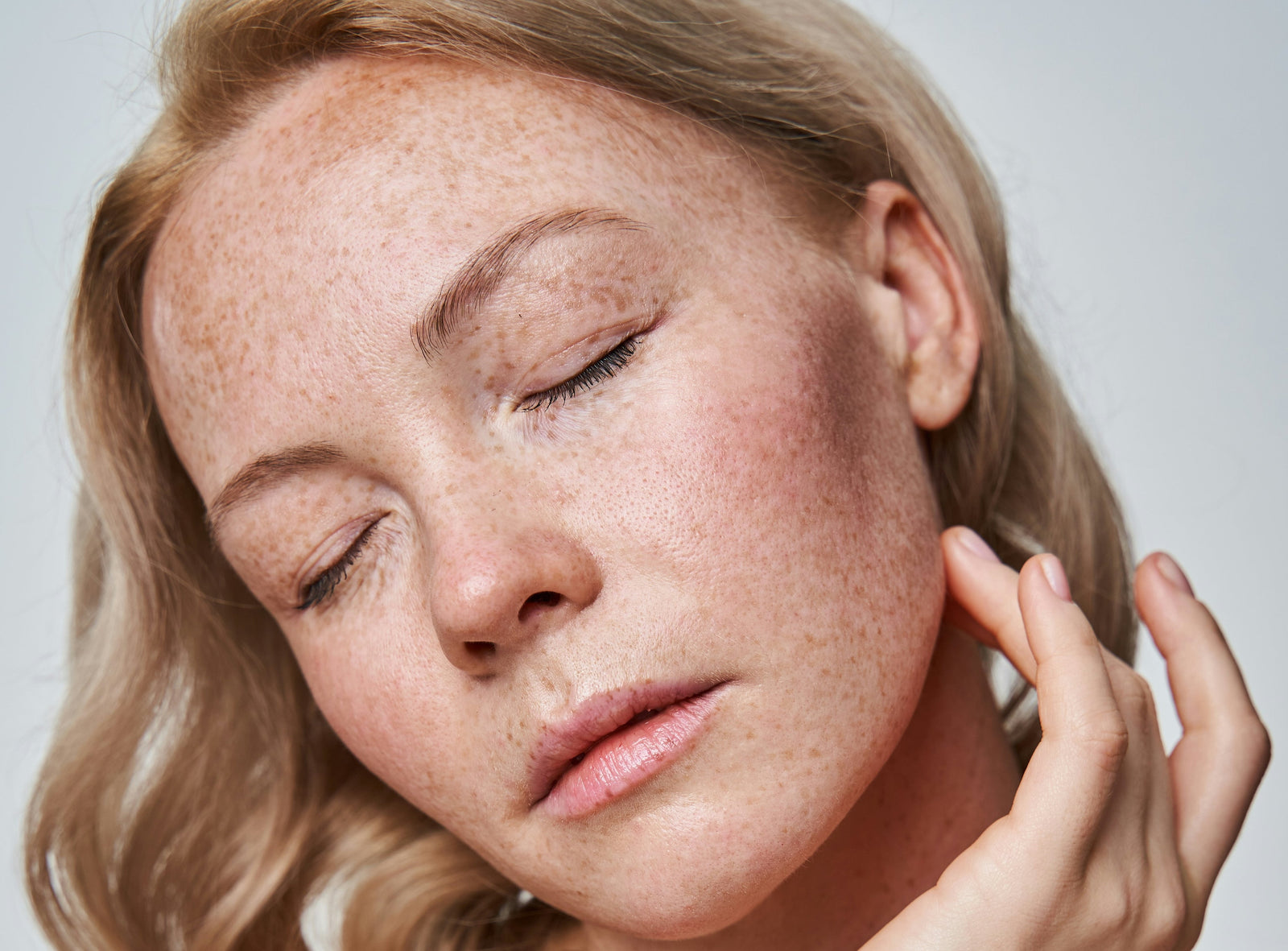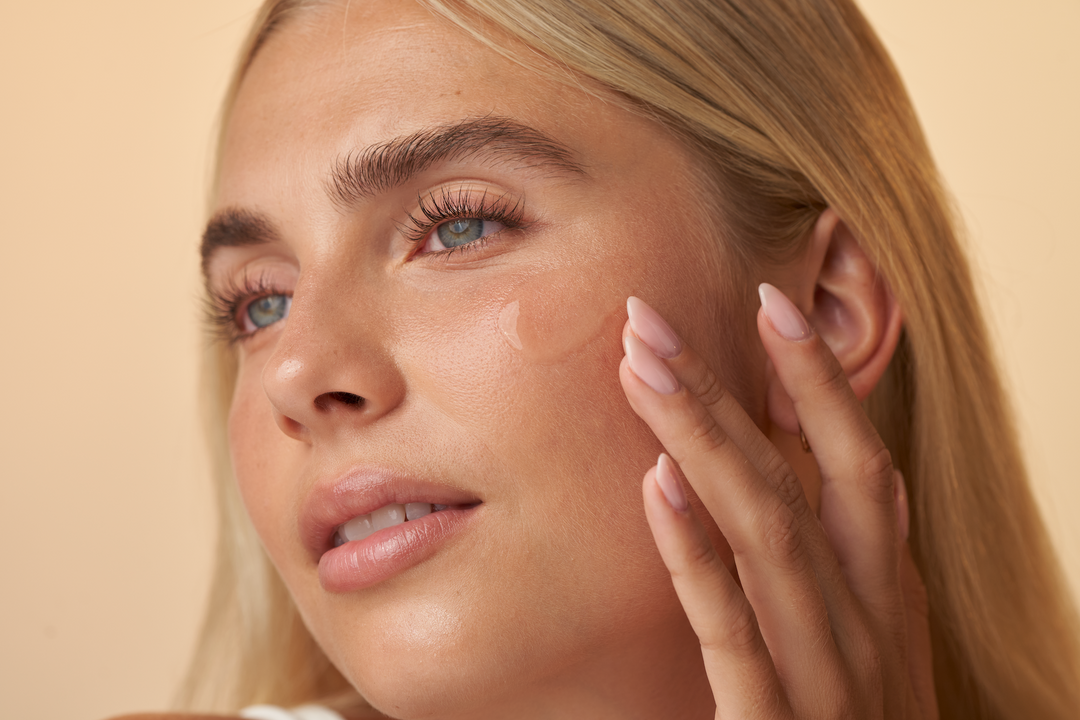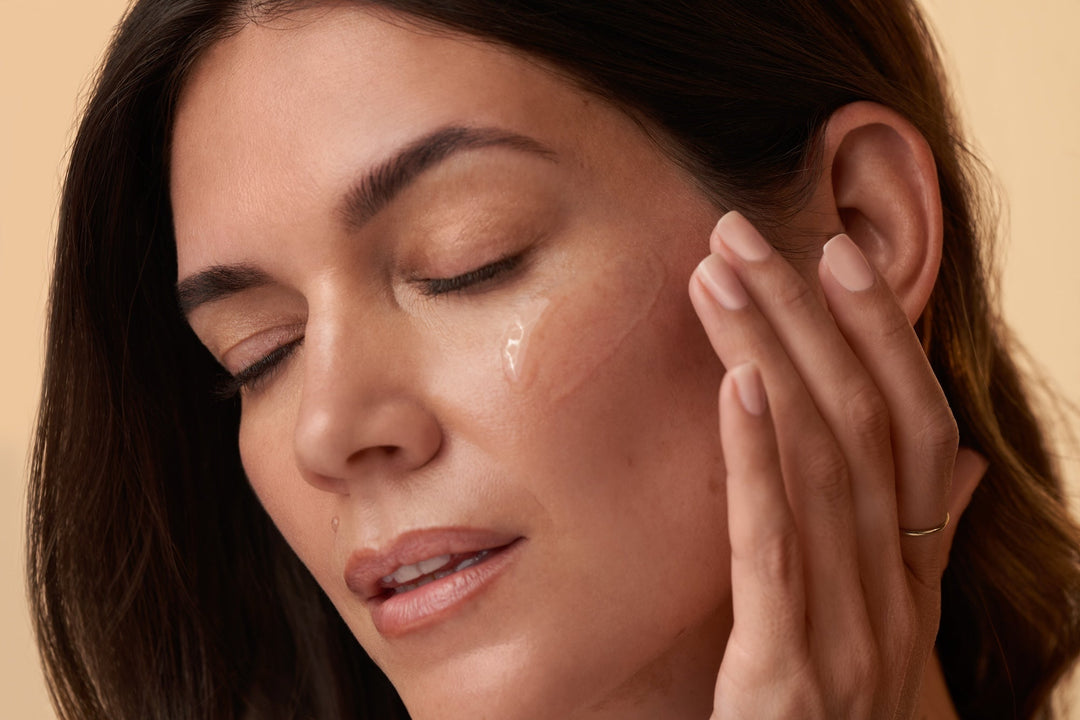Freckles vs. Sun Spots: What’s the Difference?

Not all spots and dots on your face are the same. Some are harmless and even charming, while others signal underlying skin damage. Freckles and sunspots may look alike, but they’re very different. Knowing the difference ensures you choose the right care for your skin.
Freckles, those specks of charm, might be part of your genetic blueprint (or your favorite beauty trend thanks to freckle pens). But if you’re seeing new spots show up or your old ones are starting to look different, it could be something more: sun spots.
Whether you’re constantly laying out in the sun or occasionally skipping sunscreen on a quick coffee run, over time any kind of exposure to UV rays will leave its mark. In this guide, we’re breaking down what’s what: freckles vs. sun spots, how to spot early signs of damage, and what the pros recommend to fade the marks you don’t want and prevent new ones from stealing the spotlight. Let’s clear things up, literally.
What are Freckles?
Freckles (also called Ephelides) are small, flat spots that tend to pop up on sun-exposed areas of the skin, think face, shoulders, and arms—although they can appear anywhere. Freckles usually show up first in childhood and can range in color from light tan to reddish or dark brown. While they are sun-responsive (they often become more noticeable in the summertime), they are a genetic training and not a sign of damage.
Completely harmless and incredibly common, freckles are especially likely to appear in people with certain variants of the MC1R gene. They are more common in those with fair skin and blond or red hair, but people with darker skin tones can get freckles that are deeper in color too.

Why do Freckles Form?
Freckles appear when your skin produces melanin — the pigment that gives color to your skin, hair, and eyes — unevenly in response to sunlight. Specialized skin cells called melanocytes make this pigment to help protect against UV rays. People genetically predisposed to freckles have melanocytes that overreact to sun exposure in certain areas, leading to the production of melanin in concentrated spots (aka freckles).
What are Sun Spots?
Sun spots, also called Solar Lentigines or age spots, are flat, dark patches that show up after years of sun exposure. Unlike freckles, which fade when the sun retreats in fall and winter, sun spots stick around all year long as lasting marks of UV damage. They usually appear on the face, hands, shoulders, and chest — the places that see the most sun. While harmless on their own, they are signs of sun damage. Plus, they can make skin look older; in fact, studies show uneven pigmentation like sun spots can add even more years to your perceived age than wrinkles do.

Why do Sun Spots Form?
UV rays are responsible for 90 percent of skin aging—and that includes sun spots. Sun spots form after years of repeated sun exposure. When your skin is exposed to ultraviolet (UV) light, it triggers melanin production as a natural defense. Over time, that constant stimulation causes certain areas to collect more pigment than others. Instead of fading like freckles, these concentrated patches of melanin become fixed in the skin’s upper layers. That’s why sun spots typically don’t go away on their own and gradually become more noticeable with age.
But pigment isn’t the only factor. UV damage also affects the pigment-producing cells themselves, called melanocytes. When these cells are pushed past their limit, the body activates a protective process called cellular senescence. Think of it as pulling the emergency brake on a damaged cell: instead of letting it keep dividing and risk more harm, the body forces it into shutdown mode.
The catch? These “senescent” cells—sometimes nicknamed zombie cells—don’t just leave the body. They hang around, alive but no longer functioning properly. Worse, they release damaging signals that can affect nearby healthy cells. This ripple effect is one reason sun spots often seem to cluster or spread in one area. Like bad apples in a barrel, zombie melanocytes can spoil their neighbors, creating visible patches of damage on the skin.
Freckles or Sun Damage? How to Tell the Difference
Still not sure how to tell the difference between freckles and sun spots? Check out this chart.
| Freckles | Sun Damage | |
|---|---|---|
| Appearance | Small, flat, red to brown | Larger, flat, yellowish to deep brown, well-defined |
| When They Appear | Childhood | Usually after age 35 |
| Cause | Genetics | Sun exposure over many years |
| Behavior | Darken with sun, fade in winter or with age | Permanent, may darken over time |
| Who Gets Them | More common in fair-skinned people with blond or red hair and light eyes | Anyone with significant lifetime sun exposure |
How to Get Rid of the Look of Sun Spots With Exosomes
Unlike freckles, sun spots will not fade away on their own. The good news? There are clinically proven ways to visibly reduce their appearance. Traditionally, dermatologists relied on ingredients like retinoids to break up excess pigment.
Today, innovation in skincare offers a gentler yet powerful solution to reduce its appearance: exosomes. Specifically, platelet-derived exosomes—the science behind our INTENSE Serum and DAILY Serum—are changing how we treat the visible signs of sun damage. Platelet-derived exosomes are nanoparticles found in all of us that help renew our skin’s appearance. Packed with antioxidants, peptides, and phosphoproteins, they help reprogram the look of skin for healthier, more even-toned, and youthful results. Read more exosomes here.

Clinical studies show that platelet-derived exosomes don’t just fade the look of sun spots and discoloration; they also improve the appearance of fine lines, wrinkles, texture, and overall radiance. And because they work in harmony with your skin rather than against it, they’re suitable for sensitive skin types—something traditional ingredients that reduce the appearance of pigmentation can’t always claim.
That means you can visibly reduce the look of sun spots. With consistent use, skin looks brighter, more even, and more youthful, making exosomes a breakthrough solution for tackling the look of sun damage at every level.

Photo source: Proffer, S. L., Paradise, C. R., DeGrazia, E., Halaas, Y., Durairaj, K. K., Somenek, M., Sivly, A., Boon, A. J., Behfar, A., & Wyles, S. P. (2022). Efficacy and Tolerability of Topical Platelet Exosomes for Skin Rejuvenation: Six-Week Results. Aesthetic surgery journal.
How to Prevent Sun Spots
It’s no secret that the best way to treat sun spots is to stop them from forming in the first place—and smart sun protection is your skin’s strongest defense.
-
Wear Sunscreen Every Day
Apply a broad-spectrum, water-resistant sunscreen with SPF 30 or higher to all exposed skin before going outside, even on cloudy days and during winter. Reapply often, ideally every two hours, or more often if you're sweating or swimming. -
Dress for Sun Defense
Shield your skin with a wide-brimmed hat, UV-protective sunglasses, and lightweight long-sleeved shirts and pants. For an extra layer of protection, look for clothing labeled with a high Ultraviolet Protection Factor (UPF). -
Skip the Sun at Peak Hours
UV rays are strongest between 10 a.m. and 4 p.m. Try to stay in the shade during these hours whenever possible. -
Say No to Tanning
Whether it’s the sun or a tanning bed, all forms of tanning can damage your skin and trigger freckles and sun spots. Want a sun-kissed glow without the harm? Go for a self-tanner or spray tan instead.
Freckles vs Sun Spots: The Bottom Line
Your skin reflects your time in the sun, your genetics, and your overall skin health. While freckles are usually harmless and often tied to your natural complexion, sun spots can be a sign of long-term UV exposure and underlying cellular stress. Understanding the difference helps you care for your skin more intentionally.
Fortunately, there are proven ways to support and protect your skin’s look. Daily sun protection, healthy habits, and cosmetic treatments like platelet-derived exosomes offer a thoughtful approach to reducing their look. Whether you’re embracing your freckles or working to reduce the look of sun spots, your skin will benefit from consistent care and a little extra support.
SOURCES
Proffer, S. L., Paradise, C. R., DeGrazia, E., Halaas, Y., Durairaj, K. K., Somenek, M., Sivly, A., Boon, A. J., Behfar, A., & Wyles, S. P. (2022). Efficacy and Tolerability of Topical Platelet Exosomes for Skin Rejuvenation: Six-Week Results. Aesthetic surgery journal, 42(10), 1185–1193.
Wyles, S. P., Yu, G. T., Gold, M., & Behfar, A. (2024). Topical Platelet Exosomes Reduce Senescence Signaling in Human Skin: An Exploratory Prospective Trial. Dermatologic surgery : official publication for American Society for Dermatologic Surgery [et al.], 50(11S), S160–S165.
https://my.clevelandclinic.org/health/articles/23091-freckles
https://health.osu.edu/health/skin-and-body/are-freckles-a-sign-of-skin-damage
https://www.health.harvard.edu/staying-healthy/whats-the-difference-between-age-spots-and-sun-spots
https://www.mayoclinic.org/diseases-conditions/age-spots/symptoms-causes/syc-20355859
https://www.skincancer.org/blog/photoaging-what-you-need-to-know/
https://www.nia.nih.gov/health/skin-care/skin-care-and-aging
https://pmc.ncbi.nlm.nih.gov/articles/PMC3790843/






